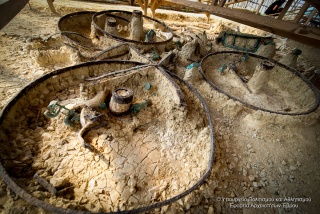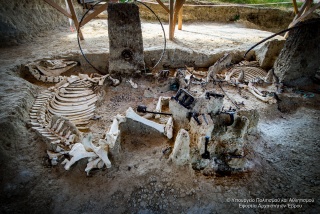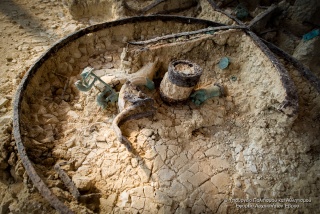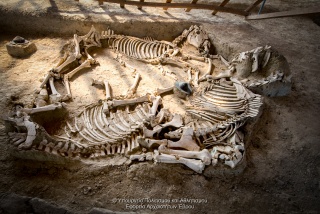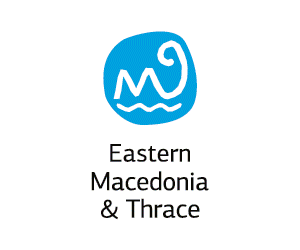Traveler's Guide
East Macedonia & Thrace
Tomb Zone of Doxipara
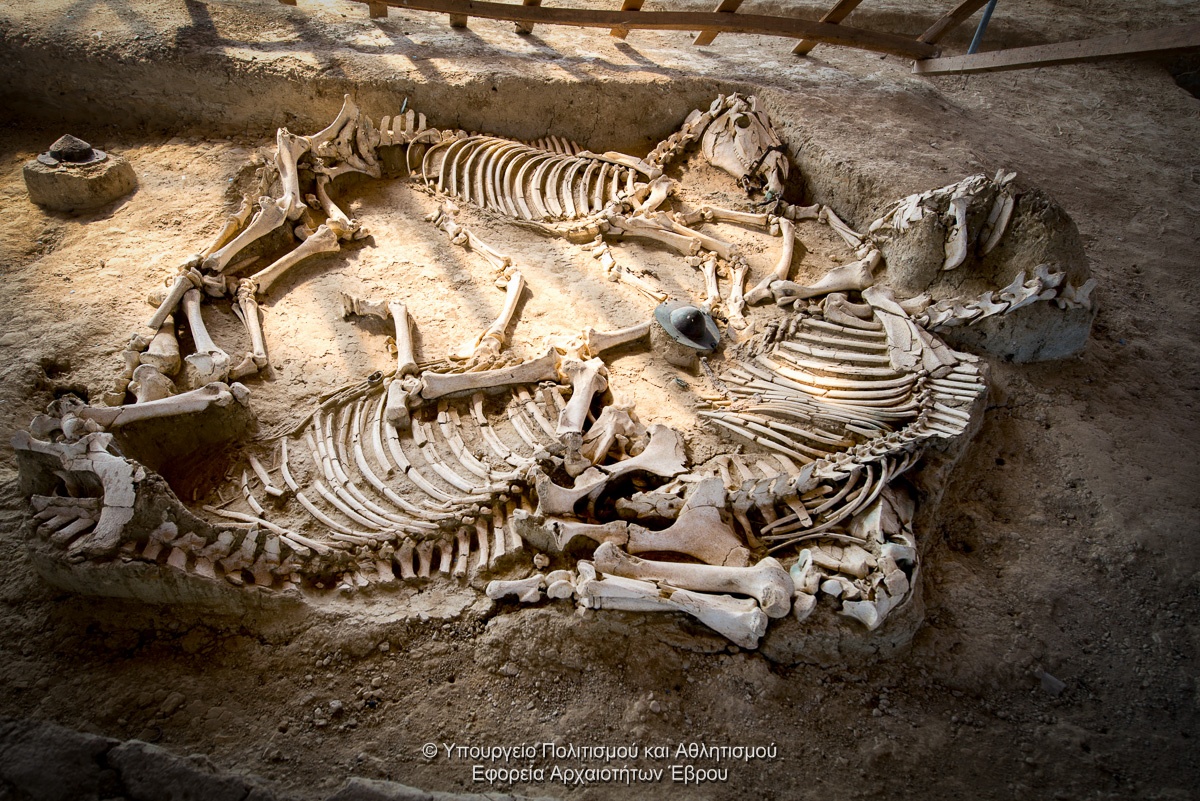
At the beginning of the 2nd century AD, four members of a rich landowning family, (who died over a period of time), were cremated and buried at the same location, close to the road which led from Hadrianopolis to Philippoupolis. At this site a large tumulus was gradually constructed to keep the memory of the dead alive through the centuries.
The area today is part of the municipality of Kyprinos and is situated close to the villages of Mikri Doxipara, Zoni and Chelidona Excavation has revealed four large pits which contained the cremated remains of three males and one female along with numerous offerings to accompany them into the afterlife, such as clay, glass and bronze vessels, bronze lamp stands and lamps, bronze lanterns, weapons, jewellery, wooden boxes etc. The five wagons with which the dead had been brought to the site were buried in the same location along with their horses. A further five horses were buried close by. Metal decorations and metal parts of the mechanism of all the wagons remain while in two cases impressions of the wooden parts have been preserved.
he excavation of the burial tumulus of Mikri Doxipara-Zoni was started in 2002 by the 19th Ephorate of Prehistoric and Classical Antiquities of Thrace, the regional subsidiary of the Ministry of Culture. The archaeologists in charge were Diamantis Triandafillos, then director of the Ephorate and Domna Terzopoulou. The work to date has been funded completely by the Ministry of Culture.
It was a rescue excavation, since in the past there had been many attempts to destroy the tumulus and plunder the contents. The excavation was included in the programme of rescue excavations in the northern Evros area in 1998, when the site was visited on the suggestion of Thanasis Dermentzis, resident of Mikri Doxipara, and it was observed that there were a number of illegal trenches in its surface.
The numerous chips and fragments of worked marble, which were scattered over the surface of the tumulus, led to the initial suggestion that it covered a built tomb or sarcophagus. This hypothesis was not confirmed and it is now believed either that there was a built monument on the summit of the tumulus, which had been totally destroyed, or that a monument had existed in, or close by, the location that was later covered by the tumulus.
In 1999 the topographic survey of the tumulus was completed, while in 2000 a geophysical survey with geo-radar, from the Laboratory of Geophysical, Satellite Remote Sensing and archaeo-environment of the Institute for Mediterranean Studies of Crete, took place under the leadership of Dr. Apostolos Sarris.
The excavation began on the 9th September 2002 and a few days later the wheels of the first wagon were uncovered. Four-wheeled wagons, buried with or without their horses, have been found in many areas of Europe and Asia. The discovery at the tumulus of Mikri Doxipara-Zoni is the first in Greece. The excellent state of preservation of the wagons and the skeletons of the horses, as well as the presence of wood impressions from two of the wagons, offer a unique and particularly vivid picture, which we have attempted to preserve by every way at our disposal.
The first results of the excavation were presented in February 2003 during the annual conference on Archaeological Work in Macedonia and Thrace, provoking a significant response amongst the archaeological community as well as in the wider one.
The excavation continued, under very difficult circumstances, throughout 2003. Four further wagons, five additional horse burials and four large pits, which contained the remains of the cremation burials and the many gifts which had been offered by relatives to accompany the dead into the afterlife, were gradually revealed.
Light shelters were constructed for the protection of the wagons, the horse burials and the cremations against the weather. Under these the patient tasks of cleaning and uncovering were carried out until the excavation was completed in 2004. Today the whole of the tumulus has been removed. The wagons and the horse skeletons are still in situ, while the finds have been removed from the cremation burials.
Winter: 07.00 a.m - 14.30 p.m
Summer: 07.00 a.m - 17.00 p.m
Ticket: € 6, Reduced ticket: € 3
Service Unit: 19th Ephorate of Prehistoric and Classical Antiquities
Phone: +302531022411
Source: http://odysseus.culture.gr/h/2/eh251.jsp?obj_id=20...
Address
2 Sot. Tserkezi street, Orestiada, PC 68200, Orestiada, Evros (Prefecture of Evros)Contact Information
- Tomb Zone of Doxipara
Tomb Zone of Doxipara
×- Tomb Zone of Doxipara_GR
- Tomb Zone of Doxipara_EN
- Tomb Zone of Doxipara_BG
